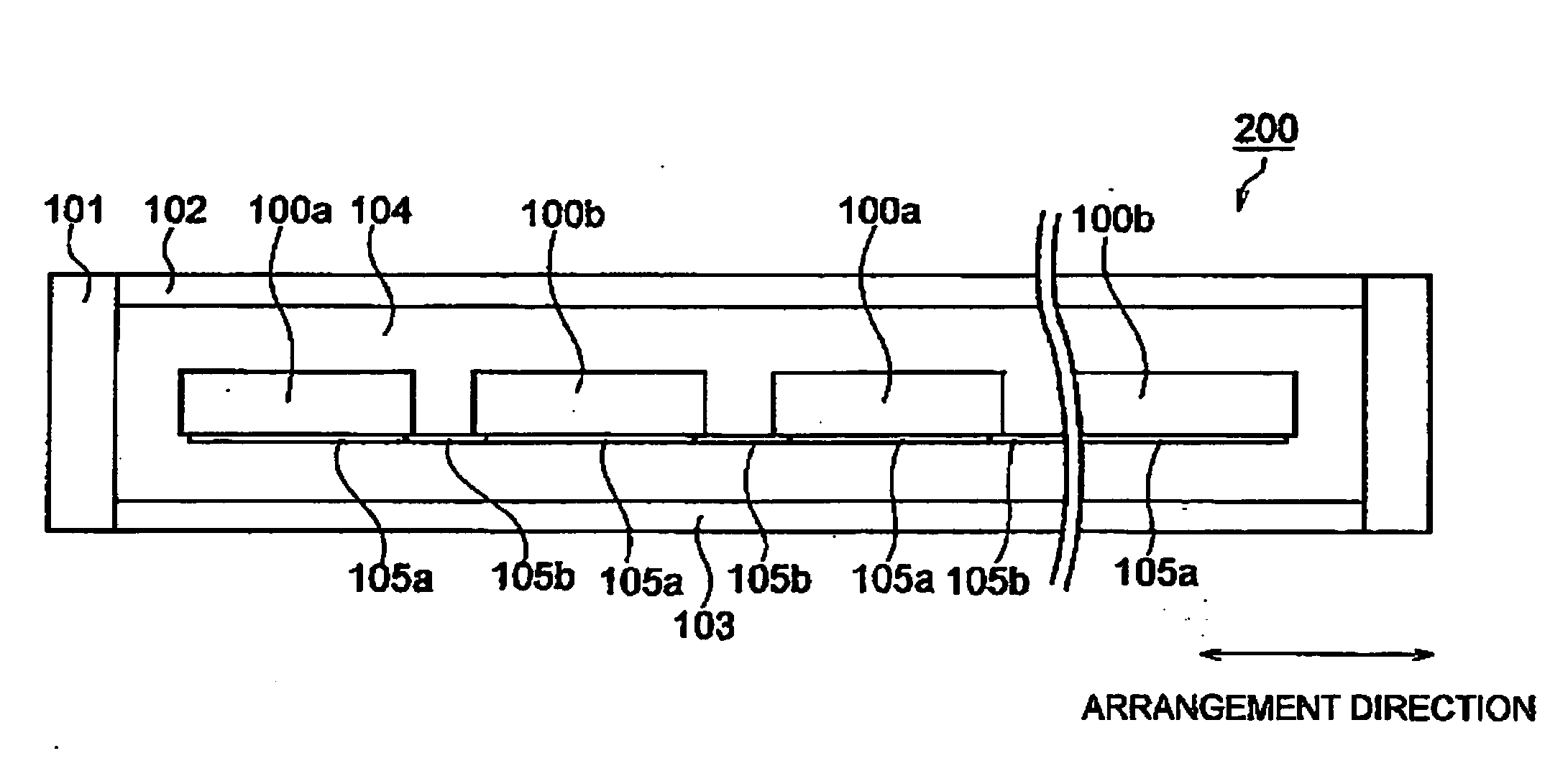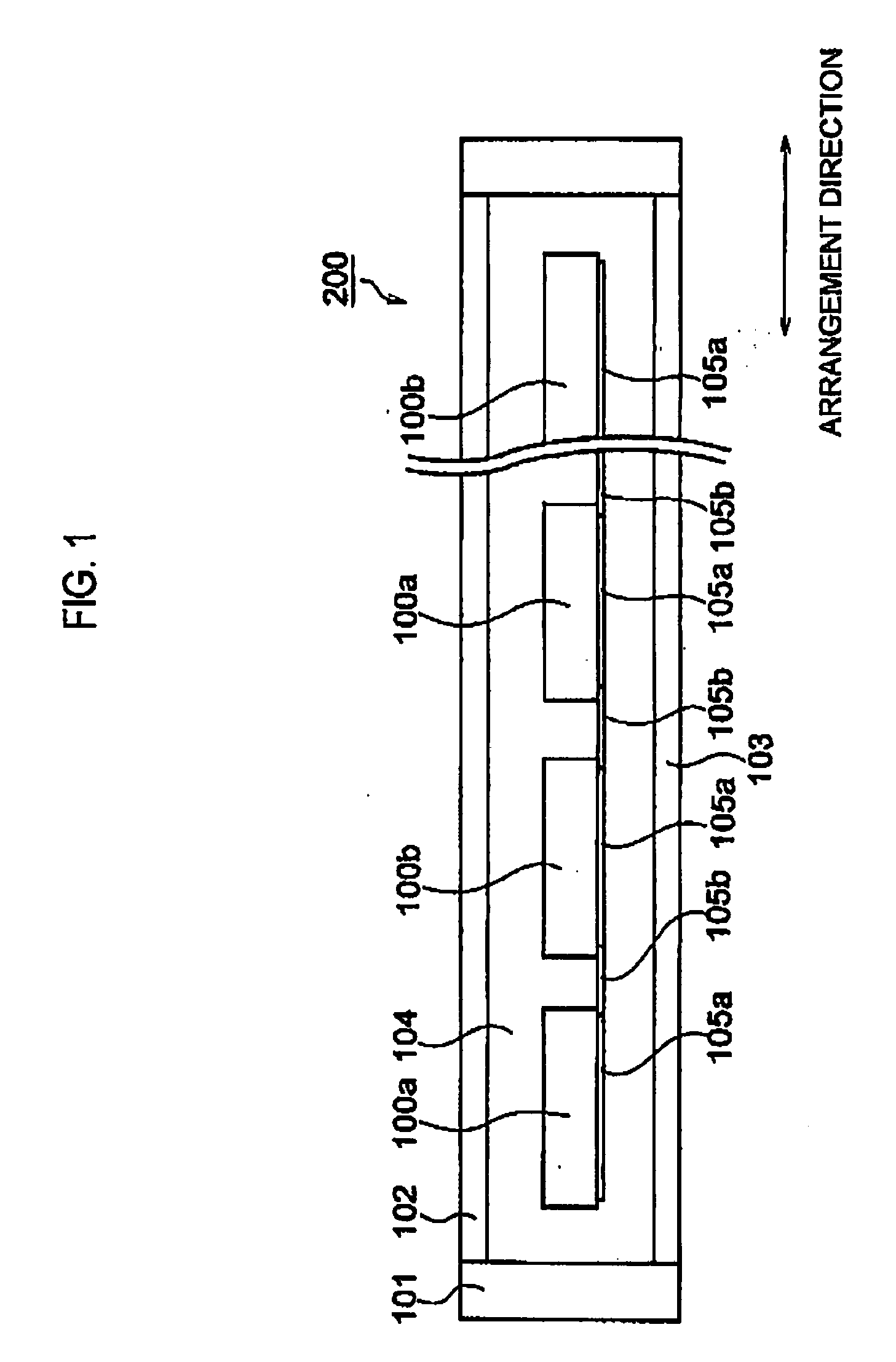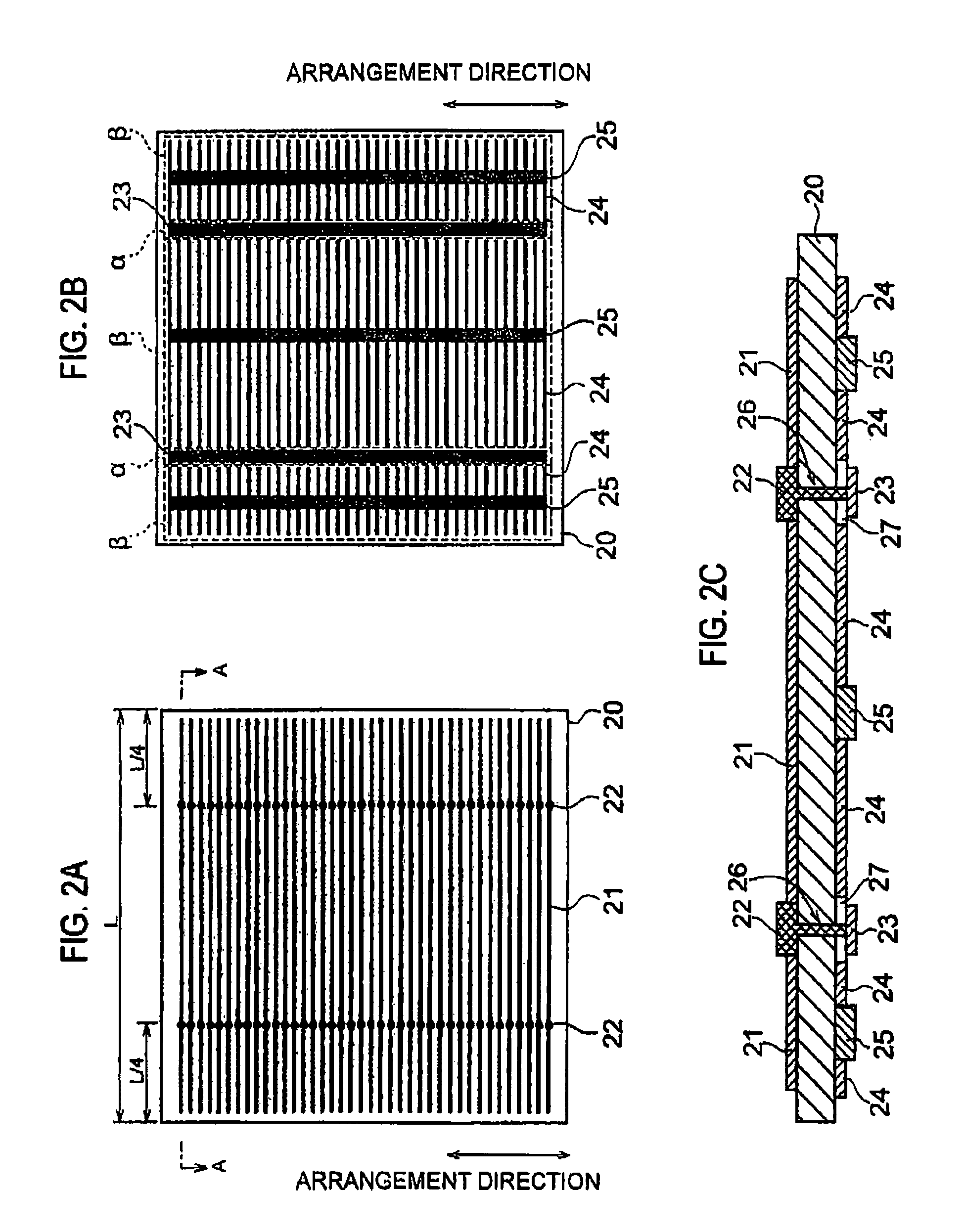Solar cell module
a solar cell and module technology, applied in the field of solar cell modules, can solve the problem of solar cell cracks easily caused, and achieve the effect of improving the production yield of solar cells
- Summary
- Abstract
- Description
- Claims
- Application Information
AI Technical Summary
Benefits of technology
Problems solved by technology
Method used
Image
Examples
first embodiment
(Schematic Configuration of a Solar Cell Module)
[0031]A schematic configuration of a solar cell module according to a first embodiment of the present invention will be described below by referring to FIG. 1. FIG. 1 is a view showing the configuration of a solar cell module 200 according to the first embodiment of the present invention.
[0032]As shown in FIG. 1, the solar cell module 200 has multiple solar cells 100, a light-receiving surface side protection member 102, a back surface side protection member 103, and a sealing member 104. In addition, the solar cell module 200 has a wiring member 105 by which the solar cells adjacent to each other are connected in series. Furthermore, a frame body may be provided in an outer circumference of the solar cell module 200.
[0033]The solar cell 100 has a light-receiving surface receiving sunlight and a back surface provided on the opposite side of the light-receiving surface. The multiple solar cells 100 are arranged in an arrangement directi...
second embodiment
[0085]The configuration of a solar cell module according to a second embodiment of the present invention will be described below.
[0086]The solar cell module according to the present embodiment has a similar schematic configuration to that of the solar cell module 200 shown in FIG. 1.
[0087]The solar cell module according to the present embodiment includes multiple solar cells 100 which are arranged in an arrangement direction.
[0088]FIG. 8 is a backview showing a state where third and fourth solar cells 100c and 100d are connected on a back surface. In the solar cell module according to the present embodiment, the third and fourth solar cells 100c and 100d are alternately arranged to be adjacent to each other in the arrangement direction.
[0089]Photoelectric converters of the third and fourth solar cells 100c and 100d may be manufactured by using semiconductor substrates having the same polarity, or semiconductor substrates having opposite polarities.
[0090]FIG. 9 is a cross-sectional v...
PUM
 Login to View More
Login to View More Abstract
Description
Claims
Application Information
 Login to View More
Login to View More - R&D
- Intellectual Property
- Life Sciences
- Materials
- Tech Scout
- Unparalleled Data Quality
- Higher Quality Content
- 60% Fewer Hallucinations
Browse by: Latest US Patents, China's latest patents, Technical Efficacy Thesaurus, Application Domain, Technology Topic, Popular Technical Reports.
© 2025 PatSnap. All rights reserved.Legal|Privacy policy|Modern Slavery Act Transparency Statement|Sitemap|About US| Contact US: help@patsnap.com



